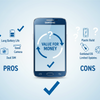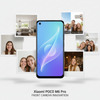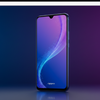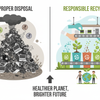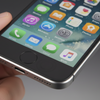Why Don't More Smartphones Have This?
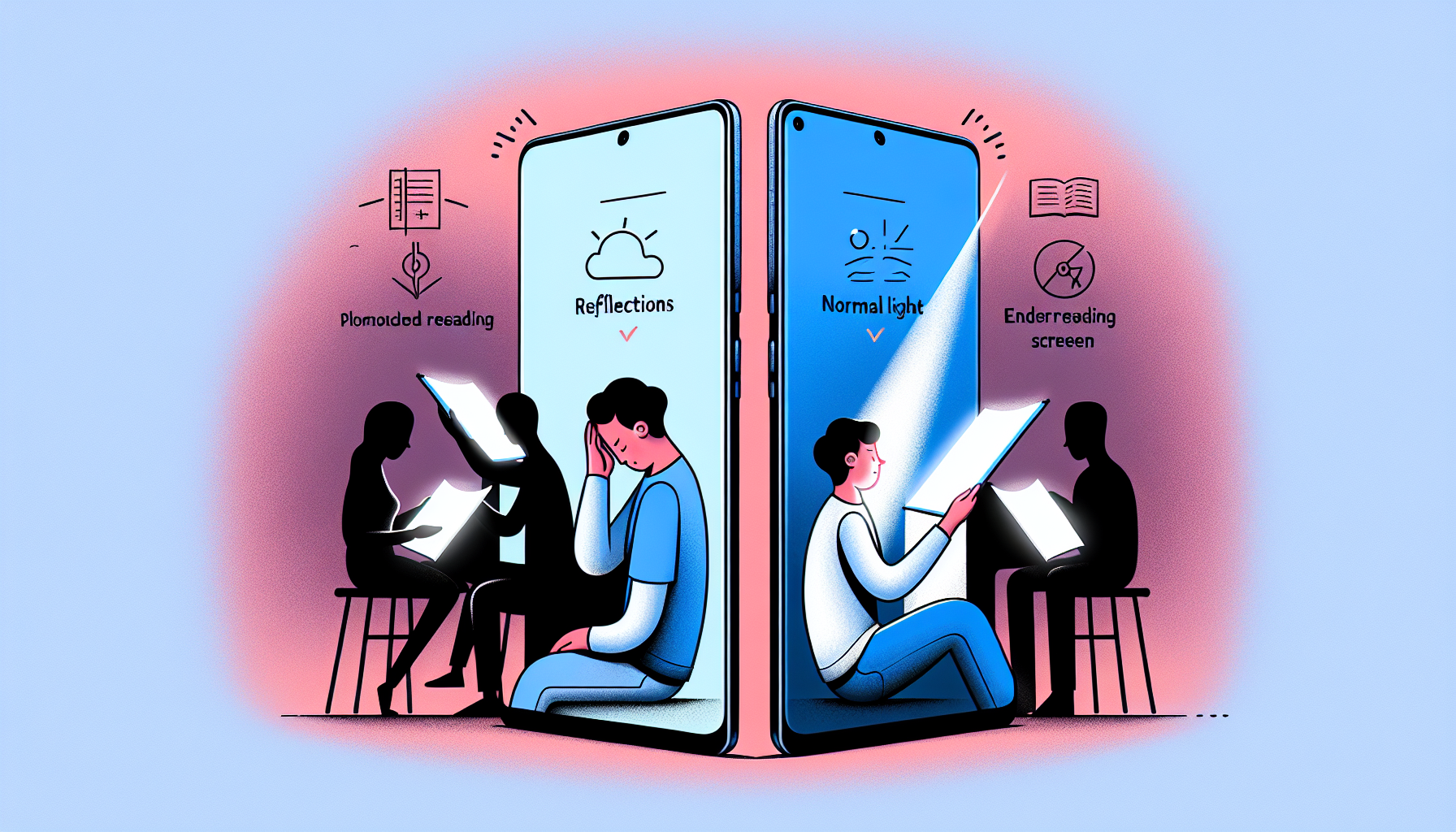
Introduction
At first sight, the TCL 40 NXTPAPER might appear as just another budget-friendly Android phone. However, there's a distinct aspect that distinguishes it from the rest. The focal point of this device is its NXTPAPER screen, which provides a unique visual experience akin to that of paper, devoid of any reflections. This cutting-edge screen technology is designed to lessen eye strain and ensure a comfortable reading experience. This leads us to ponder: Why isn't this feature more widespread in smartphones?
It's particularly intriguing that the TCL 40 NXTPAPER, despite being an economically priced phone, is among the pioneers in integrating this technology. As someone who has firsthand experience with the NXTPAPER screen, I am intrigued about the lack of its adoption in other phones. From my perspective, the benefits it offers – notably reduced eye strain and minimal reflections – make it a highly appealing feature for smartphone users.
The Technology Behind NXTPAPER
The TCL 40 NXTPAPER smartphone stands out with its unique screen technology. Unlike typical smartphones, NXTPAPER uses an electronic paper color screen to deliver a paper-like visual experience. It's essentially an LCD screen, but with a special textured glass layer and software enhancements that create this paper-like effect. This approach is crucial for reducing eye strain. By arranging the ink particles under the screen in a specific way, NXTPAPER screens reduce glare and limit blue light exposure, making them more comfortable for reading, especially over long periods.
This screen technology is not just about the hardware; it also involves clever software adjustments. These adjustments modulate saturation and colors, contributing to the screen's matte finish and soft appearance. The result is a display that's easy on the eyes and reduces reflections, which is particularly beneficial in various lighting conditions. The matte finish also plays a key role in minimizing blue light exposure, further decreasing eye fatigue.
However, NXTPAPER's unique approach does come with some drawbacks. The additional layers necessary for this technology can diminish the screen's brightness and affect its sharpness and contrast. This compromise might make NXTPAPER less ideal for outdoor use or for users who prioritize high image quality and sharpness.
In summary, NXTPAPER technology represents a significant step in smartphone display innovation, prioritizing eye comfort and a paper-like reading experience. While there are certain limitations in terms of brightness and clarity, this technology could evolve to address these challenges, potentially leading to broader adoption in future smartphones.
Limitations of NXTPAPER Screens
The TCL 40 NXTPAPER smartphone, while boasting an innovative screen technology, comes with certain drawbacks that are important to consider.
Firstly, there's an issue with brightness and visibility in outdoor environments. The NXTPAPER screen, due to its extra layers, exhibits lower brightness levels. This makes it less ideal for use outside, particularly in bright sunlight, where the screen might seem faded and less impressive.
Another point of concern is the resolution and sharpness of the screen. Although it's a 1080p screen, it doesn't quite match the crispness and clarity of other screens on the market. Text and images may look somewhat softer, and finer details might not be as evident, making its resolution seem more akin to a 720p screen.
In terms of contrast and color, the NXTPAPER screen also falls short. The subdued brightness level leads to a limited contrast ratio of only 1,500:1. This means there's less distinction between the dark and light areas on the screen. Moreover, colors on the NXTPAPER screen are not as saturated, resulting in less vibrant hues compared to other screens.
An additional limitation is its incompatibility with screen protectors. The unique build of the NXTPAPER screen, which includes additional layers and textured glass, makes it unsuitable for traditional screen protectors. This restricts options for safeguarding the screen against scratches and damage.
These drawbacks may shed light on why the NXTPAPER technology hasn't been more widely adopted in smartphones. Despite its benefits like reduced eye strain and minimal reflections, many users still prioritize superior image quality, sharpness, and overall screen performance. It remains to be seen if future technological advancements can address these issues, potentially making NXTPAPER screens a more common feature in smartphones.
Why Aren't More Smartphones Using NXTPAPER?
The TCL 40 NXTPAPER smartphone, featuring a unique screen technology, hasn't seen widespread adoption in other devices for several reasons.
Firstly, the NXTPAPER screen is more costly to produce due to its additional layers and hardware. This extra expense can be a deterrent, especially for budget smartphones.
Secondly, consumer preferences play a big role. People generally favor screens that are bright, sharp, and colorful. The NXTPAPER screen, designed to reduce reflections and eye strain, might compromise on these aspects. Therefore, manufacturers often choose screens that excel in image quality and visual performance.
Another factor is the lack of consumer interest in matte screens like the NXTPAPER. The majority of smartphone users prioritize other features such as camera performance, battery life, and processing power. Since matte screens are a niche feature, their demand is relatively low.
Furthermore, the smartphone market has various niche features that don't always catch on widely. NXTPAPER screens, despite their benefits like reduced eye strain and fewer reflections, might not be as appealing as other features like foldable screens, high refresh rates, or advanced cameras.
In summary, the limited use of NXTPAPER screens in smartphones is due to the higher production costs, consumer preferences for brighter and more vivid screens, the low demand for matte screens, and the competition with other niche features. While the advantages of NXTPAPER technology, such as less eye strain and reflection, are notable, these factors currently limit its prevalence. The future of this technology in smartphones will depend on how manufacturers address these challenges and whether they can balance the trade-offs.
Conclusion
The TCL 40 NXTPAPER smartphone stands out with its NXTPAPER screen, offering a distinct visual experience. This screen technology is designed to reduce reflections, thus minimizing eye fatigue and enhancing the comfort of reading. Its matte finish and ability to lessen eye strain are particularly appealing for users who prioritize a more enjoyable reading experience on their smartphones.
However, there are reasons for the limited use of NXTPAPER screens in smartphones. One primary factor is cost: the additional layers and specialized hardware required for NXTPAPER technology make it more expensive to produce. This aspect is particularly significant for budget-conscious manufacturers. Moreover, consumer preferences typically lean towards screens that offer high brightness, sharpness, and vivid colors, qualities that the NXTPAPER screen might compromise in order to reduce reflections and eye strain.
Another factor is the overall demand for matte screens in the smartphone market, which is relatively low. Most users tend to value other features more, such as superior camera quality and robust processing power. Additionally, the existence of other unique features in smartphones, like foldable screens or advanced camera technologies, also influences the popularity and adoption of NXTPAPER screens.
In summary, while NXTPAPER technology provides certain benefits, including reduced eye strain and fewer reflections, its limited presence in the smartphone market is due to production costs, consumer preferences, and competition with other specialized features. The future of NXTPAPER screens in smartphones depends on whether these challenges can be addressed as technology evolves.
FAQ
Here are some frequently asked questions about NXTPAPER screens:
Q1: What is NXTPAPER?
A: NXTPAPER is a cutting-edge screen technology designed to emulate the look of paper, providing a unique visual experience free from glare. It's engineered to reduce eye strain significantly and offer a more comfortable reading experience.
Q2: How does NXTPAPER minimize eye fatigue?
A: The technology behind NXTPAPER works by reorganizing the ink particles beneath the screen surface. This creates an effect similar to reading from actual paper, reducing glare and cutting down on the blue light emitted. This leads to a more comfortable and less straining viewing experience, especially for prolonged periods.
Q3: What are the drawbacks of NXTPAPER screens?
A: While NXTPAPER offers certain advantages, it also has its limitations. These include reduced brightness, which affects visibility especially in outdoor conditions, a generally lower resolution and less sharpness compared to traditional screens, and limited contrast and color range. Additionally, NXTPAPER screens may not be compatible with certain types of screen protectors.
Q4: Why aren't more smartphones using NXTPAPER?
A: The adoption of NXTPAPER in smartphones has been limited for several reasons. Firstly, the technology involves additional layers and complex manufacturing processes, making it costlier. Secondly, the mainstream consumer market tends to favor screens that offer high brightness, sharp resolution, and vivid colors, which NXTPAPER screens currently struggle to provide. Moreover, the demand for matte screens among smartphone users is relatively low. There are also other specialized features in smartphones that currently attract more consumer interest than matte screens.

